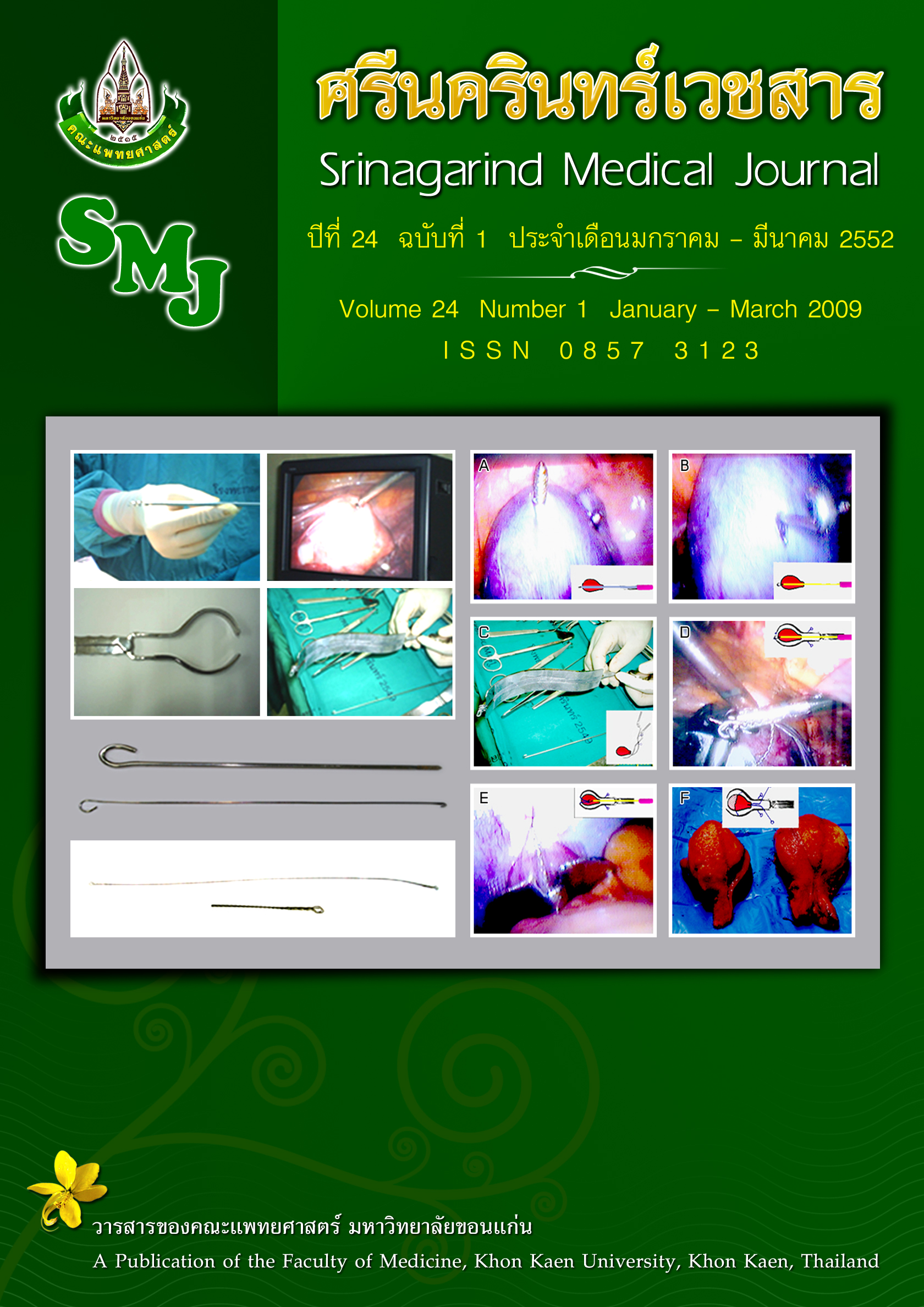A PILOT STUDY: The Ten Successful Cases of Modified Laparoscopically Assisted Vaginal Hysterectomy, Using Uterine Screw and Forceps
Abstract
Background: Laparoscopically asisted vaginal hysterectomy (LAVH) has continued to gain popularly. However, one of the limitations is a huge leiomyoma. Modified LAVH, using uterine screw and forceps, was designed and introduced by our research team for solving this problem.
Study objective: To evaluate the effectiveness and safety of modified laparoscopically assisted vaginal hysterectomy (M- LAVH), using uterine screw and forceps.
Design: Descriptive study.
Setting: Srinagarind Hospital, Faculty of Medicine, Khon Kaen University.
Patients: Patients scheduled for hysterectomy for a benign condition, in whom a vaginal hysterectomy was not possible and no moderate to severe adhesion.
Interventions: Modified laparoscopically assisted vaginal hysterectomy (M- LAVH), using uterine screw and forceps.
Results: Ten patients were recruited in this study. Huge leiomyoma ( > 12 week-size ) was diagnosed in 8 patients. The others were recurrent uterine bleeding, caused by submucous leiomyoma, and recurrent dysfunctional uterine bleeding. The operative procedures were M- LAVH in 6 patients, additionally with unilateral salpingo-oophorectomy in 3 patients and bilateral salpingo-oophorectomy in 1 patient. The mean operative time was 194 minutes (S.D. = 54, 95% CI 155.4 to 232.6 minutes). The mean duration of forceps applied throughout the procedure was 27 minutes (S.D. = 9.2, 95% CI 20.4 to 33.6 minutes). The median weight of uterus, including cervix, was 315 gm (range 270-750 gm). Two patients developed post operative complications. One, whose the suture material of uterine artery had spontaneously slipped in 12 hours after surgery, was repeated laparoscopic electrocoagulation for homeostasis. Another developed pelvic inflammatory disease at the third week after operation. Almost all patients were discharged from the hospital on the third day after operation (range 2- 5 days).
Conclusions: M-LAVH, using uterine screw and forceps, is a safe and effective method for treatment the patient who indicated hysterectomy, especially due to large leiomyoma. Therefore we would like to distribute this new procedure to the gynecological laparoscopists for further study and further evaluate for improving the success of LAVH.
Keywords: Uterine forceps, LAVH, Laparoscopic hysterectomy




